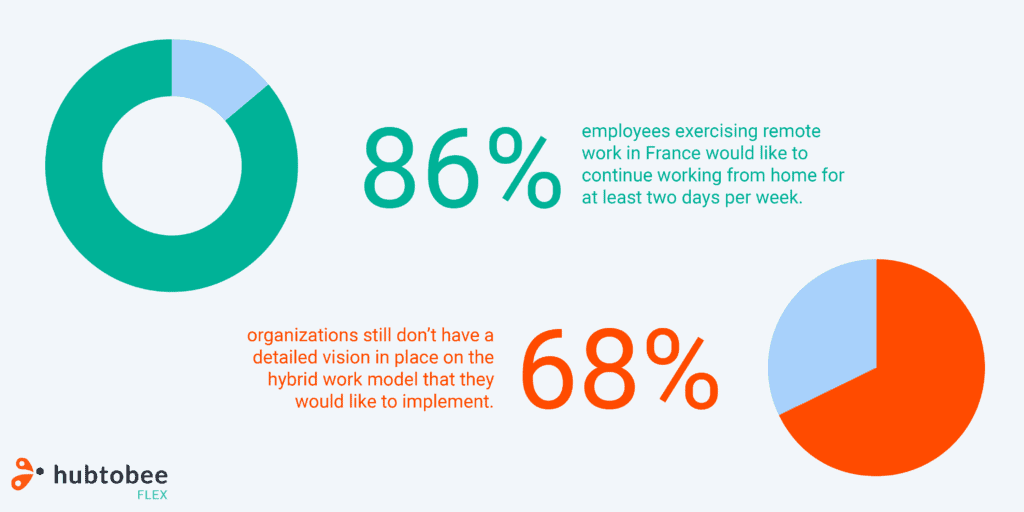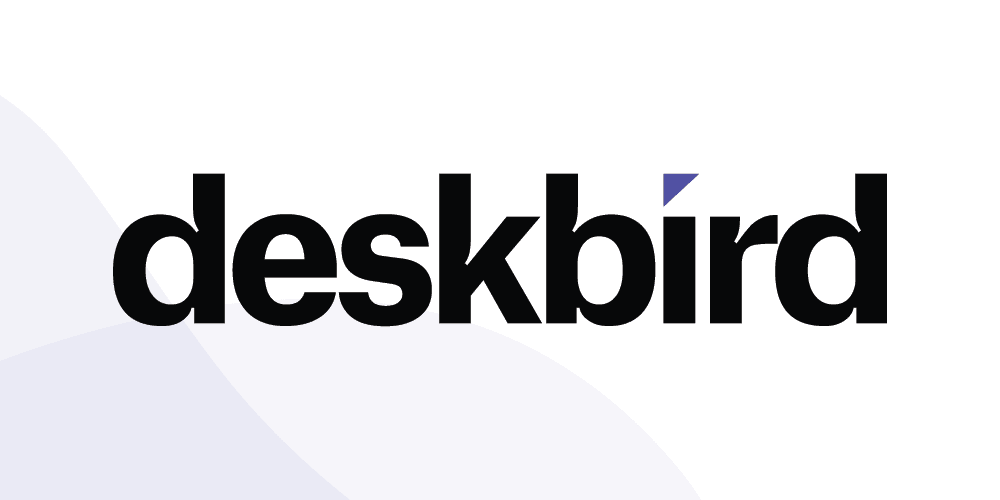The struggle of defining the best hybrid work organization

The future of work is hybrid
86 percent of employees exercising remote work in France would like to continue working from home for at least two days per week.
At the same time, business leaders are enthusiastic about the return from remote working, increasing the disconnect between themselves and their employees.
As a result, at companies across the globe, workers are leaving at much higher rates than normal. Recent surveys found that 58 percent of workers globally are considering leaving their current employers if they aren’t allowed to continue working from home at least some of the time.
In an effort to improve talents’ satisfaction and keep them within the company, nine out of ten organizations will be combining remote and on-site working in the post-pandemic world.
HR struggle to define the best hybrid work organization
The HR department is, therefore, at the forefront of the challenge to find the best way of organizing hybrid work at their companies, a model that will satisfy individual employees, IT, unions, and the company’s management.
On top of that, Human Resources should be capable to prove that the chosen routine creates value by increasing productivity, cutting costs, and supporting the corporate culture.
A huge challenge, if you ask me. Especially, considering that no aggregated data exists yet to support the HR Director’s decisions.
In such situations, an Excel table, often used for managing the team’s presence during the pandemic, is not enough. It is also quite time-consuming, insecure, and frustrating. Nothing good comes from the file shared with every single employee in the company…
The enterprise has to have a tool that can easily integrate within the firm’s IT, HR, and Accounting environments. A platform that can combine individual inputs and general data on the office spaces, employees’ presences, and WFH rules. An application that can automatically approve if a person is allowed or not to work from home or book a workspace in the office.
Being aware of the struggle and having a deep experience in managing employees’ presence, we have created a solution that simplifies the hybrid work organization, Hubtobee Flex.
Very quickly, though, we have understood that software exclusively is not enough.
Why?
The executives of nearly 68 percent of organizations still don’t have a detailed vision in place on the hybrid work model that they would like to implement.
Employees, traumatized by nearly two years of confinement and complete isolation from their teams, are also at a loss.
Nobody knows how they would like to work, increasing, even more, the anxiety within the company.
So we decided to help enterprises to figure out what work organization is going to work best for every team and employee.

Hubtobee accompanies firms in their transformation to hybrid working
As hybrid work is rather a new concept for many companies, it is quite difficult for HR to find an appropriate benchmark or even general data on its best practices and benefits.
Furthermore, the work modes and needs can vary drastically between regions, teams, and individuals that no singular model can satisfy.
Therefore, the transformation towards the new work realities is both data-heavy and complex. It also varies widely from one company to another.
Our experts are happy to support companies in their transformation towards new work realities by providing consulting sessions with your HR representative.
Together, we define the firm’s needs and existing assets in terms of work organization, office spaces, and technology.
After analyzing and structuring the data provided, we put forward recommendations on the most favorable work mode. We answer such questions as:
- What do I need to organize hybrid work in my company?
- How many WFH days per week to allocate to different types of employees: full-time vs part-time, function, age, seniority?
- Should the choice of days be fixed or flexible?
- Who approves the chosen days? Should they be approved automatically?
- How to ensure that all team members come to the office on the same day and work side by side?
- Is it possible to reserve the desk anywhere in the office?
- How to ensure that there are enough workplaces/parking for everyone?
- How to manage individual cases?
We may also predict the possible qualitative and quantitative benefits of the different work modes. For example, commute time accounted for, the number of individual desks that you can transform into collaborative spaces, and the frequency of employees seeing each other.
Sounds helpful, doesn’t it? Get in touch with our experts now!
Hubtobee makes it easy for you to choose and prove the effectiveness of the chosen hybrid work organization, and to provide your management with data-based suggestions on how to improve the teams’ satisfaction and productivity.




